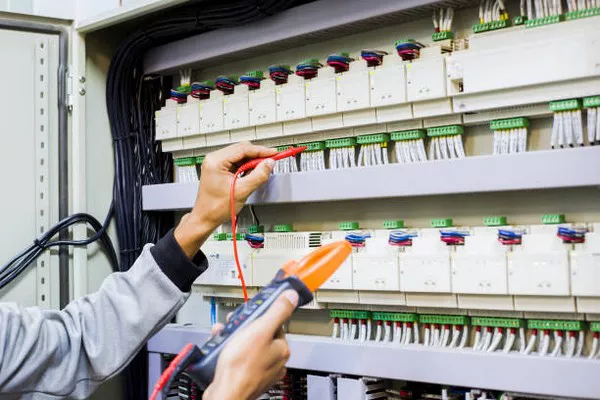1. What Is a Step-Down Transformer?
A step-down transformer is a fundamental component in electrical engineering, serving to reduce voltage levels from the primary side (high voltage) to a lower voltage on the secondary side. This process is the inverse of a step-up transformer, which elevates voltage levels. The primary purpose of a step-down transformer is to facilitate safe voltage levels for various applications, ensuring compatibility and efficient power distribution.
2. Real-Life Applications of Step-Down Transformers
Transmission Systems
Step-down transformers are integral to the functionality of transmission systems, which are responsible for transferring electrical power from generating stations to distribution substations and ultimately to consumers. In these systems, voltage transmission occurs in multiple stages. Initially, power plants generate electricity at high voltages, often around 20 kV. To transmit this energy efficiently over long distances with minimal loss, step-up transformers are employed to elevate the voltage, typically to around 440 kV.
At distribution substations, where power is allocated to various regions or neighborhoods, step-down transformers are utilized to reduce the voltage from the transmission level (e.g., 440 kV) to levels suitable for consumer use, commonly around 11 kV. This reduction in voltage is crucial for ensuring safety and compatibility with household appliances and electronic devices.
Working Principle of Transformers
Transformers operate on the principle of mutual induction, a phenomenon where a change in current in one coil induces an electromotive force (EMF) in another coil placed in close proximity. This process relies on the interaction of magnetic fields between the coils.
Primary and Secondary Coils:
A transformer consists of two coils, known as the primary and secondary coils, each wound around a common core typically made of ferromagnetic material. The primary coil is connected to an alternating voltage source, which generates an alternating current (AC) through the coil. As the current varies, it produces a changing magnetic flux within the core.
Mutual Induction:
The alternating magnetic flux generated by the primary coil induces an EMF in the secondary coil, even though they are not electrically connected. This phenomenon, known as mutual induction, occurs due to the changing magnetic field created by the primary coil, which links with the secondary coil.
Key Points on How Transformers Work
Primary Coil:
The primary coil is connected to the alternating voltage source, typically the power grid or generator output, and experiences the primary voltage. This voltage induces an alternating magnetic flux within the transformer core.
Secondary Coil:
The secondary coil is connected to the load, which draws the stepped-up or stepped-down voltage as required for its operation. The voltage induced in the secondary coil is proportional to the turns ratio between the primary and secondary coils.
Alternating Magnetic Flux:
The alternating current in the primary coil generates an alternating magnetic flux within the core of the transformer. This changing magnetic field links with the secondary coil, inducing an EMF across its terminals.
Faraday’s Law:
The principle of electromagnetic induction, as formulated by Michael Faraday, governs the operation of transformers. According to Faraday’s law, the EMF induced in a coil is directly proportional to the rate of change of magnetic flux linkage.
Where Are Step-Down Transformers Used?
Transmission Lines:
Step-down transformers are essential components in transmission lines, facilitating the interconnection of transmission systems operating at different voltage levels. Transmission lines often span vast distances, and step-down transformers are strategically placed along these lines to adjust voltage levels as needed for efficient power distribution.
Electronic Devices:
In the realm of electronics, step-down transformers are commonly used to supply low voltages required for the operation of various electronic devices. Many electronic components and circuits operate on low voltages, such as 5V or 12V, and step-down transformers are employed to convert higher voltages from the power source to these lower levels.
Battery Chargers:
Daily-use battery chargers for smartphones, laptops, and other portable devices often incorporate step-down transformers to provide the appropriate charging voltage. These chargers typically operate from mains power, which is at a higher voltage, and step-down transformers are utilized to reduce this voltage to levels suitable for safely charging the battery.
Conclusion
In conclusion, step-down transformers are indispensable devices in electrical engineering, enabling the efficient and safe distribution of electrical power across various applications. From transmission systems to electronic devices and battery chargers, their role in voltage transformation is pervasive and essential. Understanding the working principles and applications of step-down transformers is crucial for ensuring reliable and sustainable power infrastructure. As technology continues to advance, the demand for efficient voltage conversion solutions will only grow, further emphasizing the significance of step-down transformers in modern society.

